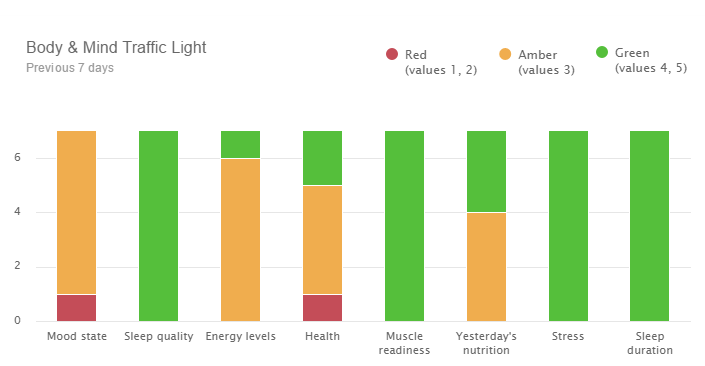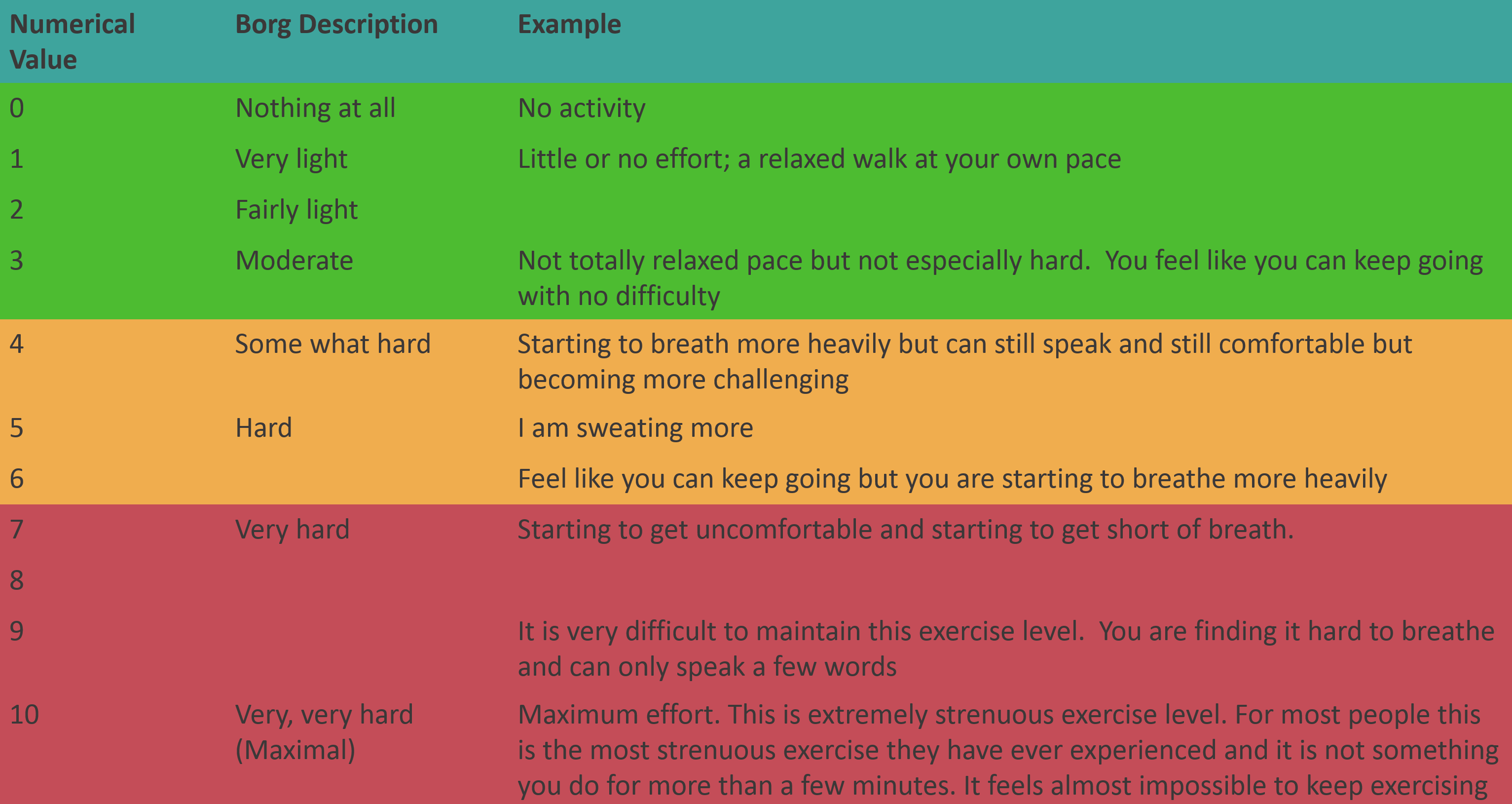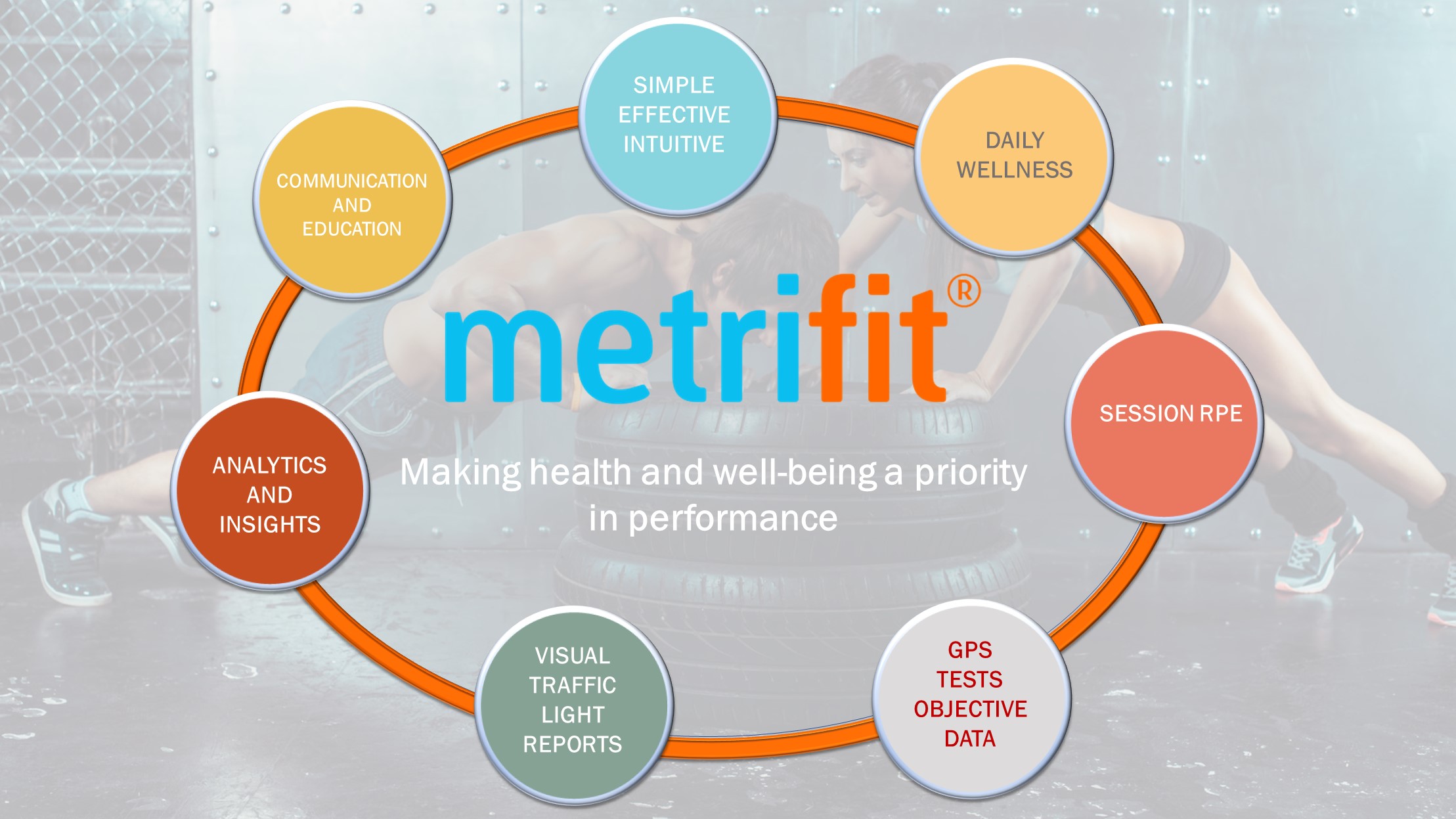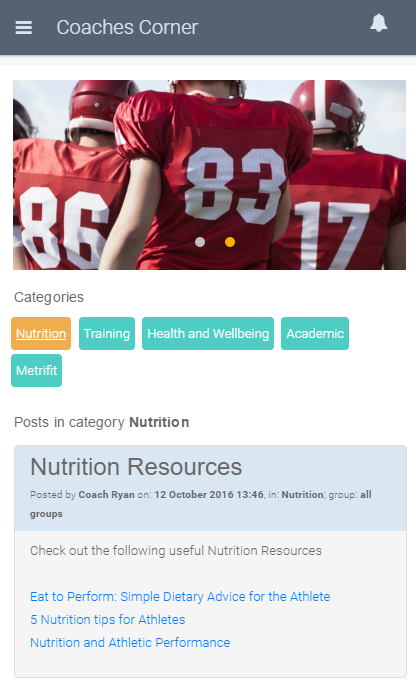Optimizing the benefits of athlete self-reporting measures
The increasingly scientific approach to sport means that the modern athlete relies on information from a variety of sources in order to achieve success. This information includes the vital area of training but also areas of equal importance such as nutrition, rest and mental well-being among other things. Trying to keep a close eye on this growing amount of detail can be difficult for an athlete who needs to concentrate their energies on preparation and has meant that monitoring has become a huge part of an athlete’s regime simply because the process ultimately helps improve an athlete’s performance. As a result, it is vital that coaches and athletes implement a monitoring process that helps them get the maximum benefit.

Research in this area has highlighted some key points to consider when implementing a monitoring system and we also have some tips you can follow if you are thinking about introducing a monitoring system for your athletes. Monitoring Athletes Through Self-Report: Factors Influencing Implementation by Anna E Saw, Luana C Main and Paul B Gastin, sets out to identify the perceived factors influencing the implementation of athlete self-report measures (ASRM) in elite sport settings in order to optimize the benefits monitoring can bring.
Importance of monitoring
This report highlights the benefits of monitoring – put simply the monitoring process can help an athlete ensure that they are in the best possible condition to train, while effective training naturally leads to improved performance in competition. This is achieved through maximizing the benefit of training which in turn provides the athlete with a competitive edge. This edge is created by ensuring that not only is an athlete following the right training program, but monitoring also ensures that they can identify potential problems such as injury, illness, and burnout. Each of these factors can hamper an athlete’s ability to train consistently. If they can avoid missing training sessions, they will be better prepared to achieve success. This report looks in detail at Athlete Self Reporting Measures (ASRM). The athlete needs to take ownership of the data being recorded to help produce the necessary data on which a coach and athlete can act. ASRM develops an athlete’s self-awareness and accountability, giving them a greater sense of responsibility for their well-being. With access to relevant data, the athlete has a greater understanding of how their own body functions. Consequently, they have increased focus to follow the correct program and a greater sense of motivation and confidence. Metrifit has become established as one of leaders in technology in terms of monitoring and their approach not only covers the physical requirements of a particular sport but also helps the coach derive the benefits of other factors that have a significant influence on an athlete’s well-being: training, body, nutrition, mind, and sleep. Of course objective information is very important as well and combining both is the best scenario and information from test results and GPS can also prove invaluable.
How to optimize monitoring
Not only should ASRMs be effective in producing the right information, but they must be time efficient and straightforward for the athlete to implement, and Anna Saw outlines what measures can be implemented to ensure that monitoring is a success. The study involved a sample of eight athletes, seven coaches and 15 sports science and medicine staff and covered 20 different sports programs. The volunteers were interviewed during the course of the study and addressed the benefits and negatives of completing an ASRM looking at the following areas:-
- how the ASRM were implemented
- how accurately athletes responded
- who looks at the data
- what actions take place
- suggestions for improvement
On analyzing the results, the researchers state that in order to improve implementation of ASRM and ultimately athletic outcomes, a multi-factorial and multi-level approach is needed and have put forward the following key points in terms of optimizing the benefits of monitoring:-
- Effective implementation of a self-report measure for monitoring athletes requires a multi-factorial and multi-level approach which addresses the particular measure used and the surrounding social environment
- A well-designed self-report measure should obtain quality data with minimal burden on athletes and staff
- A supportive social environment involves buy-in and coordination of all parties, at both an individual and organization level
The report concludes by stating that effective monitoring requires:
a design which obtains quality, meaningful data from the athlete with minimal burden. This means careful consideration of the questions, number of questions and frequency of completion along with effective utilization of technology. The organization then has a role in facilitating implementation of the measure through the ongoing investment in staff and resources, and establishing a positive culture through education and trust in the process. Such a culture is further supported by the perceptions and actions of the end-users
In Developing athlete monitoring systems in team-sports: data analytics and visualization by Thornton HR, Delaney JA, Duthie GM, Dascombe BJ, it is emphasized that underpinning a successful athlete monitoring system is the ability of practitioners to communicate and present important information to coaches, ultimately resulting in enhanced athletic performance.
Tips for Training Monitoring in Team Sports
Using software to help with athlete self-reporting can be a bit daunting for coaches and staff who have very busy schedules and may not be overly familiar with technology. Yann Le Meur has put together a great infographic listing the Top 10 tips for training monitoring in team sports. We have detailed these below and added some of our own experience re each.
1: Give fast feedback to athletes
Some athletes will be 100% into monitoring and keeping track of their data and regardless of feedback they will see value in having this information for themselves. But the majority like to feel that they are being listened to and that the effort they are putting into inputting information is actually looked at and used by coaches and staff to provide actionable feedback. This doesn’t have to be anything very time consuming but if there are athletes flagged by the system as a concern it is useful if coaches/staff use these flags to find out more from their athlete and ‘act on the data’. This could be as simple as a conversation to find out more about a stress issue or an individualization of training during a particular team training session based on the data. If athletes realize that the information they input is used to invoke change they will buy into it more easily.
2: Do the basics right before introducing more advanced monitoring responses
It is tempting to want to have a full bells and whistles monitoring system from the word go. This works fine in the business world where you are desk based and have time and staff to go through everything in detail. In the sports world monitoring is meant to be an aid to training and competition performance but obviously a lot more time is spent on the field/pitch/court/pool and time is of the essence. The last thing you want to do is overwhelm athletes and coaches and staff. The basics might include daily well-being questionnaire and session RPE. If you can get everyone on board with that and get good compliance you have some invaluable information and you can build on from there increasing complexity and functionality as you require it and can act on it.
3. Show athletes the sRPE post training
It is very important to educate players/athletes on the session RPE method. Printing out a basic chart with easy to understand descriptions that are relevant to them can help ensure this accurately reflects their perceived exertion. Explain why you are using it and the research that proves its value.

4. Show athletes how monitoring can help their own performance
‘You can’t manage what you don’t measure’ : The beauty of building up data over time is that it can help athletes visualize different areas of well-being and training and point out areas of concern. For example, it may be that certain athletes are struggling with academic / work pressures. They might often be reluctant to say this to coaches and staff and find it easier to self-report. If you notice stress levels are high and you have information on the reason, a conversation can go a long way to help solve these issues and as a result improve performance.
5. Athlete “buy-in” – team sport athletes are competitive creatures. However, if comparing athletes/groups make sure comparisons are based on all aspects of performance and not just one e.g. GPS
Each athlete on a team has different skill sets, strengths and weaknesses. Comparing athletes on high speed running stats for example is always going to favor certain team members.
6. Make sure athletes know why you are collecting the data
This applies equally to coaching staff and players/athletes. If you are using a monitoring system just because some other team is using it with no clear objective of what you want to get out of it, it is hard to provide essential feedback to your team. Metrifit’s daily traffic light reporting, reporting over time and analytics looking at deviations from normal behavior helps coaches/staff see areas of concern within their team and keep track of team training loads to help avoid sudden spikes in training. If athletes are not with you all the time and involved in other teams and/or other sports their information can help keep you up to date with their training programs and well-being and you are then able to take this into consideration when they are with you or when you are prescribing training programs.

7. Create a consistent routine so that athletes know what is expected of them each day
It is very important to set a minimum standard at the start for your athletes. And it is important in the initial phases to monitor and manage this to help everyone get on board. It takes some time to form a habit – often longer than the 21 days quoted by many – and it is easy to forget to fill in your daily questionnaire initially. Use alert notifications or calendar reminders to help with this and appoint a staff member to be responsible for checking who has logged and who hasn’t in the initial weeks.
8. Make sure senior athletes and coaches support the monitoring system and enforce
It’s important first of all to have the buy-in of all staff. If your Strength & Conditioning coach has bought in but your physio/athletic trainer/medical staff have not, then you have a problem before you start. Getting all athletes on board can initially be difficult and it is a good idea to try and pinpoint some leaders within the group to help encourage this in a positive way.
9. Ask the athletes independently and be sure you don’t let them escape training captivity before you ask them to rate sRPE
One of the advantages of athletes having access to their own data is that they can easily log their session RPE in private. In cases where the coach is gathering this athletes will often change their mind based on previous answers overheard from other team members. Put up sRPE reminders in the changing room and make it as easy as possible for them to complete this.

10. Report few variables, but database many
Focusing all data and permutations of all that data can result in a lot of information very quickly and it can overwhelm and make it hard to action. Initially focus on well-being scores and training loads and some easy visualization of these that can pinpoint any issues quickly. When you have time you can export all information and look at in more detail.
In our experience, effective use of a communication portal to centralize all important information greatly helps with buy-in and compliance. If athletes are logging into the app to view important information it is easier for them to see it as an essential part of their routine. Metrifit provides its own in-built messaging portal to allow you to message individually or to a group. The Coaches Corner provides a facility to populate your own library with key educational resources for each group on the system. Posts can be categorized for easy retrieval and pictures can be loaded to help built the team spirit.
What is Metrifit?
Metrifit helps coaches get to know their athletes, and helps athletes get ready to perform. It is a simple, intuitive and effective approach to monitoring looking at how the ‘small picture’ of an athlete’s daily habits, shapes the ‘big picture’ of match day performance.
Whether your use of Metrifit is to have a highly accurate reflection of acute to chronic work-load ratios to make training/competition decisions, to empower student-athletes to be reflective and take charge of their Health & Wellness, or as a basis to engage in conversation with your athletes thereby demonstrating you care about them as individuals, Metrifit simply works. It meets athletes where they reside – on their mobile phones and through technology and is quick, easy, and habit-forming to use.
To find out more contact us at or click on ‘Request Demo’ below.
Follow us on social media where we post regular blogs related to sports, performance and well-being.
References
How Long Does it Actually Take to Form a New Habit? (Backed by Science) by James Clear
Challenges to Effective Athlete Monitoring are Easily Overcome | Metrifit
The importance of knowing when an athlete has reached load limit | Metrifit

 Previous Post
Previous Post Next Post
Next Post





